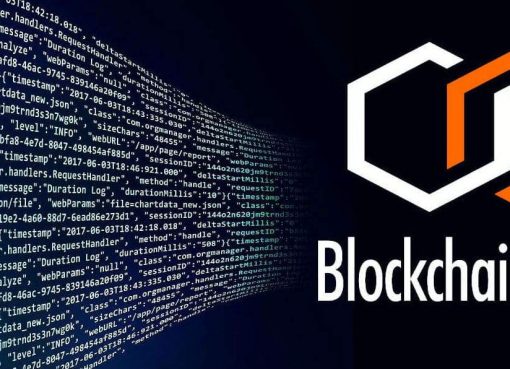The intersection of blockchain and electric vehicles (EVs) is one of the many examples that testify to the fact that the energy transition will not unfold without blockchain solutions. They are today an integral part of the transition to a green and digital energy future.
The energy transition to a decarbonized world is well on its way
The energy transition is about the production and consumption of energy shifting from using fossil-based fuels — coal, natural gas, and oil — to zero-carbon resources, like solar or wind. It is the transition to decarbonization. Today, more than 130 countries have set or are setting 2050 net-zero emissions targets. Corporates’ momentum is also strong with already about one-fifth of the world’s 2,000 largest public companies having set targets with many more having declared their intentions. The capital markets’ momentum is simply staggering with banks, investors, and other financial entities target net-zero portfolios before or by 2050. One of many examples is the Net Zero Asset Managers Initiative, which now has 128 signatories with $43 trillion in assets under management.
Power generation-wise, the International Energy Agency (IEA) forecasts about 88% of electricity mix will be from renewable energies by 2050 compared to 29% in 2020, Also, electricity will account for 49% of final energy consumption by 2050 from 20% in 2020, and the expected investment annual amount will be US$5 trillion in the 2020s and US$4.5 trillion between 2030 and 2050, compared to about US$2 trillion in 2015 to 2019.
Digital technologies are an integral part to transformation
The surprisingly missing word in most definitions of the energy transition in the public realm is “digitalization.” Digital technologies and solutions for energy are part of the new industrial revolution for industry and manufacturing processes, or Industry 4.0. This is because, as detailed in my book Asia’s Energy Revolution, these technologies and solutions offer many advantages. They include cost-savings in the energy supply value chain that benefit providers and consumers, and facilitate the investment and growth of smaller clean-energy projects.
The energy complex has relied on computational technologies for many decades because of the key role that data plays in the sourcing and distribution of the energy. Today many of these technologies and solutions are progressively using internet of things (IoT), blockchain and AI-based solutions. IoT collects and provides the data. Blockchain offers the infrastructure and sets up the rules of engagement. And artificial intelligence optimizes the processes of the rules.
IoT, blockchain and AI allow for the various elements of the energy value chain to work together more smoothly. Many will have heard of the smart grid that allows direct and indirect energy resources to work with the distribution solutions effectively and efficiently. The resources include low- to zero-carbon power generation, energy storage, electric mobility, green hydrogen and others. The distribution side includes remote monitoring (such as by drones and sensors), smart homes, smart buildings and smart industry.
Electric vehicles symbiotic relationship with digitalization
There are many real-world examples of digital technologies and solutions using IoT, blockchain and AI, and much empirical evidence shows they directly or indirectly help with the energy transition. One of the numerous examples is EVs.
Full-battery electric vehicles (BEVs) and plug-in hybrids (PHEVs) will see tremendous growth in the coming decades. The IEA expects that the tally should reach 145 to 230 million vehicles by 2030, or 7% to 12% of all vehicles on the road, from 11 million in 2020, depending on the scenario used. But given that the necessary infrastructure building is gaining momentum, even the dullish scenario will prove to be conservative.
The interplay between EVs and the electricity sector, and thus the energy transition, are the batteries and the EV internal smart systems which interact with the battery. There is existing technology for bi-directional charging points (see chart below). Batteries get their power at a charging point, which in turn obtains the electricity from a power source. The source, principally the grid, can also be an energy storage system fed by renewable energy, like a rooftop solar power installation. Bi-directional charging points can acquire electricity from the EV’s battery if needed. This maximizes the use of the battery and can generate revenue for the EV owner given that the vehicle is not driven all of the time. A passenger EV is connected to the grid but without charging for 80% or more.
Source: Author, July 2021.
Myriad companies working on blockchain solutions for EV charging
The real-world relationship between EV, the electric power grid and blockchain is taking place at many different levels. There are many dozens of use cases with small to huge companies participating. Two examples to illustrate this: Swiss/Swedish industrial giant ABB and leading energy utility EDF.
ABB partnered with Italian solar systems installer Evolvere to bring blockchain-based solutions to consumers and prosumers (households that both consume and produce energy, typically through solar generation systems) so that they may exchange energy through peer-to-peer energy transactions that are rendered secure and transparent using blockchain. Part of the offering is also to manage and optimize energy from and to the prosumers’ EV charging point. ABB should make serious advances on smart charging in the next few years. It plans an initial public offering for its EV charging division, whose revenue compound annual growth rate was about 50% in the five years through 2020. With its own management and funding, ABB says that the division will be able to continue to grow organically as well as inorganically (i.e., through acquisitions). Also, this year Hitachi ABB Power Grids, now 80.1% owned by Japan’s Hitachi, joined Energy Web, an association that aims to “develop and deploy open-source decentralized technologies.” Other members include AGL, Engie, E.On, Exelon, Shell and many other large energy companies.
EDF is one of many utilities around the world actively exploring using blockchain-based technologies to add electric vehicles to local electric power grids without building or upgrading the infrastructure which is very expensive. One of the deployments is in California where the company partnered with Omega Grid and the Sacramento Municipal Utility District, utilizing software that will optimize the charging of EVs from solar power. EDF has been investigating the use of blockchain since 2015 and is active in a number of blockchain projects, including applications revolving EV charging which can be coupled with accounting and settlement functions, transactive energy (i.e., energy trading), and even renewable energy credits.
A final example worth of mention is the MOBI project. Most of the world’s largest EV manufacturers have joined MOBI (Mobility Open Blockchain Initiative), which is a not-for-profit organization working on various blockchain-based standards including for the identification of vehicles. MOBI and its members believe that the implementation of common standards will lead to a reduction in vehicle ownership costs, including its financing costs, and allow transportation to become “more efficient, affordable, greener, safer, and less congested.”
Blockchain and EV and accelerating momentum
A report by McKinsey, a leading global consultancy, concluded that the massive increase in EVs may not necessarily sharply increase power demand but will help with the load curve. This refers to the fact that electricity demand is typically high during the day and low at night. While some would disagree with McKinsey’s conservative forecast of power demand for transport electrification, it is clear that digital solutions for the smart grid point to blockchain being an essential tool for electric power demand management. This in addition to all of the other capabilities that it will unlock in areas such as the leasing of energy systems, electricity trading, carbon credits and renewable energy certificates trading, smart home solutions enhancements and many more. And, of course, blockchain must be recognized as an essential tool for the transition to a green and digitalized energy system.




